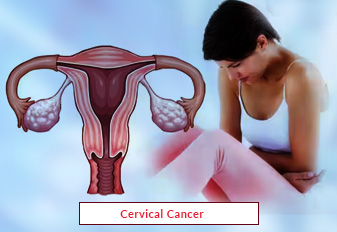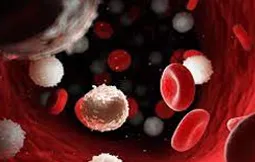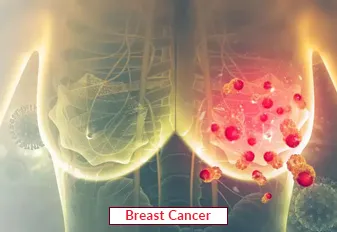Cervical Cancer Treatment

Cervical cancer is a type of cancer that begins in the cervix, the lower part of the uterus. It is primarily caused by the human papillomavirus (HPV), a sexually transmitted infection. Cervical cancer often develops slowly and may not show symptoms in its early stages, which underscores the importance of regular screenings, including Pap tests and HPV vaccines. When detected early, it is highly treatable and curable. Treatment options include surgery, radiation therapy, and chemotherapy, depending on the stage and type of cancer.
Book an AppointmentAbout Cervical Cancer
Almost all cervical cancer cases (99%) are linked to infection with high-risk human papillomaviruses (HPV), an extremely common virus transmitted through sexual contact. Long-lasting infection with certain types of human papillomavirus (HPV) is the main cause of cervical cancer. Cervical Cancer Treatment is most frequently diagnosed in women between the ages of 35 and 44 with the average age at diagnosis being 50. Women living with HIV are 6 times more likely to develop cervical cancer compared to women without HIV.
Types Of Cervical Cancer
-
Squamous Cell Carcinoma: This is the most common type, accounting for approximately 70% to 90% of all cervical cancers. It originates in the squamous epithelial cells lining the cervix. Squamous cell carcinoma typically develops in the transformation zone, where the cervix's two main types of cells meet. This type of cancer is often linked to persistent human papillomavirus (HPV) infection and is frequently identified during routine Pap smears.
-
Adenocarcinoma: Adenocarcinoma accounts for a smaller percentage of cervical cancers, around 10% to 25%. It starts in the glandular cells that produce mucus in the endocervix (the canal leading from the uterus to the cervix). Adenocarcinoma can be more challenging to detect through Pap smears, as the cancer may develop higher in the cervical canal.
-
Adenosquamous Carcinoma: This is a less common but more aggressive type of cervical cancer that combines features of both squamous cell carcinoma and adenocarcinoma. It has characteristics of both glandular and squamous cells.
-
Small Cell Carcinoma: This is a rare and aggressive form of cervical cancer that typically occurs in smokers. It is more difficult to diagnose and treat and often has a poorer prognosis.
-
Neuroendocrine Tumors: These extremely rare cervical cancers develop in neuroendocrine cells, which are responsible for hormone production. They can be aggressive and may require specialized treatments.
Symptoms Of Cervical Cancer
Cervical Cancer Treatment often develops without noticeable symptoms in its early stages, which is why regular screenings, including Pap tests and HPV vaccinations, are critical for early detection. As the cancer progresses, it may manifest various symptoms, but these can be subtle and easily overlooked.
-
Abnormal Vaginal Bleeding: Unusual vaginal bleeding can be a significant indicator of cervical cancer. This includes bleeding between periods, after sexual intercourse, post-menopause, or unusually heavy menstrual bleeding. Any unexplained or abnormal vaginal bleeding should be promptly evaluated.
-
Pelvic Pain or Discomfort: Women with cervical cancer may experience persistent pelvic pain or discomfort. This pain can range from a dull ache to sharp, intense pain. It may originate in the pelvis or lower back.
-
Abnormal Vaginal Discharge: Changes in vaginal discharge consistency, color, or odor can be a sign of cervical cancer. It may become watery, bloody, or have an unpleasant odor. While these changes can be due to various causes, they should be investigated.
-
Pain During Sexual Intercourse: Pain or discomfort during sexual intercourse, known as dyspareunia, can be a symptom of Cervical Cancer Treatment. It is often associated with advanced-stage disease.
-
Urinary or Rectal Symptoms: In advanced cases, cervical cancer may press on nearby structures, causing urinary or rectal symptoms. This can include frequent urination, blood in the urine or stool, or difficulty with bowel movements.
Procedure of Cervical Cancer
Cervical cancer treatment varies depending on the stage of the disease, the type of Cervical Cancer Treatment, and the overall health of the patient. Treatment typically involves a combination of therapies, and the healthcare team will tailor the approach to each individual's specific case. Here's an overview of the common treatment procedures for cervical cancer:
-
-
Surgery:
- Conization (Cone Biopsy): This procedure involves removing a cone-shaped section of abnormal cervical tissue. It is often used to diagnose and treat very early-stage cervical cancer or precancerous lesions.
- Hysterectomy: In cases where the cancer is limited to the cervix, a hysterectomy may be performed. Depending on the extent of the disease, it can be a total (removal of the uterus and cervix) or radical (removal of the uterus, cervix, and nearby tissues) hysterectomy.
- Lymph Node Dissection: In some cases, lymph nodes in the pelvic and abdominal areas may be removed to check for cancer spread.
-
Radiation Therapy:
- External Beam Radiation: High-energy X-rays are directed at the pelvis from outside the body to target and destroy cancer cells.
- Brachytherapy: This involves placing a radiation source directly inside the cervix to treat the cancer more precisely. It may be used alone or in combination with external beam radiation.
-
Chemotherapy:
- Chemotherapy is a drug treatment that uses powerful chemicals to kill fast-growing cells in your body. Chemotherapy is most often used to treat cancer, since cancer cells grow and multiply much more quickly than most cells in the body. Chemotherapy involves using drugs to kill or slow the growth of cancer cells. It is often administered intravenously or orally and can be used before, during, or after other treatments.
-
Targeted Therapy:
- Targeted therapies are medications that specifically target the proteins and molecular pathways involved in cancer growth. Bevacizumab is an example of a targeted therapy used in some cases of advanced cervical cancer. There are different types. Some of them may also be called biological therapies. They may be given with chemotherapy or on their own. Some are given into a vein (by a drip), some are injections and some are tablets.
-
Immunotherapy:
- Some patients may receive immunotherapy to stimulate the immune system's response against the cancer.
-
Require Assistance?
Get A Quick Callback From Our Healthcare Experts






